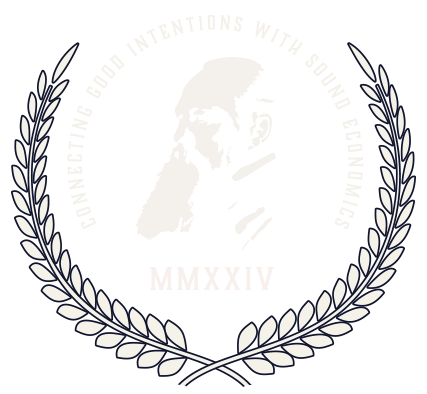 J. R. R. Tolkien was professor of Anglo-saxon and English language and literature from 1925-59 at Oxford University. Tolkien is most famous for his books The Hobbit (1937), The Lord of the Rings, which entails the three volumes entitled The Fellowship of the Ring, The Two Towers, and The Return of the King (1954-55), and The Silmarillion (1977), all of which are set in the mythological world of Middle-earth. Tolkien was a devout Catholic who both remembered and experienced times when religious freedom was not completely guaranteed in the United Kingdom. Faith, for Tolkien, as his literary biographer Joseph Pearce reports, “was not an opinion to which one subscribed, but a reality to which one submitted.” In fact, Tolkien’s relationship with C. S. Lewis, Tolkien’s friend and colleague at Oxford, was instrumental in bringing a disillusioned Lewis back to the Christian faith. Tolkien’s faith is as central in his Middle-earth books as his concern to preserve freedom. Before becoming the distinguished professor, Tolkien served in the British army during the First World War. Tolkien’s first-hand experiences in World War I instilled in him an immense preoccupation with, if not a generalized anxiety about, the rise of totalitarianism.
J. R. R. Tolkien was professor of Anglo-saxon and English language and literature from 1925-59 at Oxford University. Tolkien is most famous for his books The Hobbit (1937), The Lord of the Rings, which entails the three volumes entitled The Fellowship of the Ring, The Two Towers, and The Return of the King (1954-55), and The Silmarillion (1977), all of which are set in the mythological world of Middle-earth. Tolkien was a devout Catholic who both remembered and experienced times when religious freedom was not completely guaranteed in the United Kingdom. Faith, for Tolkien, as his literary biographer Joseph Pearce reports, “was not an opinion to which one subscribed, but a reality to which one submitted.” In fact, Tolkien’s relationship with C. S. Lewis, Tolkien’s friend and colleague at Oxford, was instrumental in bringing a disillusioned Lewis back to the Christian faith. Tolkien’s faith is as central in his Middle-earth books as his concern to preserve freedom. Before becoming the distinguished professor, Tolkien served in the British army during the First World War. Tolkien’s first-hand experiences in World War I instilled in him an immense preoccupation with, if not a generalized anxiety about, the rise of totalitarianism.
The evil of totalitarianistic power is one of the central themes in The Lord of the Rings. As Tolkien himself explained, The Lord of the Rings is a story “cast in terms of a good side, and a bad side, beauty against ruthless ugliness, tyranny against kingship, moderated freedom with consent against compulsion that has long lost any object save mere power, and so on.” The basic plot of The Lord of the Rings involves the epic quest to destroy the One Ring, in which is contained the power to rule all of Middle-earth. While the characters and events of The Lord of the Rings generally defy precise allegorical parallels, the One Ring easily symbolizes the corruption and tyranny that result from having unchecked political power. The One Ring confers on its wearer the power to rule Middle-earth, but also imposes an inescapable slavery to maintain this power at any cost. At one level, The Lord of the Rings allegorizes the progression of a tyrant. Beginning as a ruler, even a well-intentioned one, he or she becomes ruled by the spasmodic hunger to acquire yet more power and the insatiable desire to squelch all freedom. The tyrant then becomes as enslaved as his or her subjects, all of whom exist in a state of commonplace bondage repugnant to any expression of virtue.











